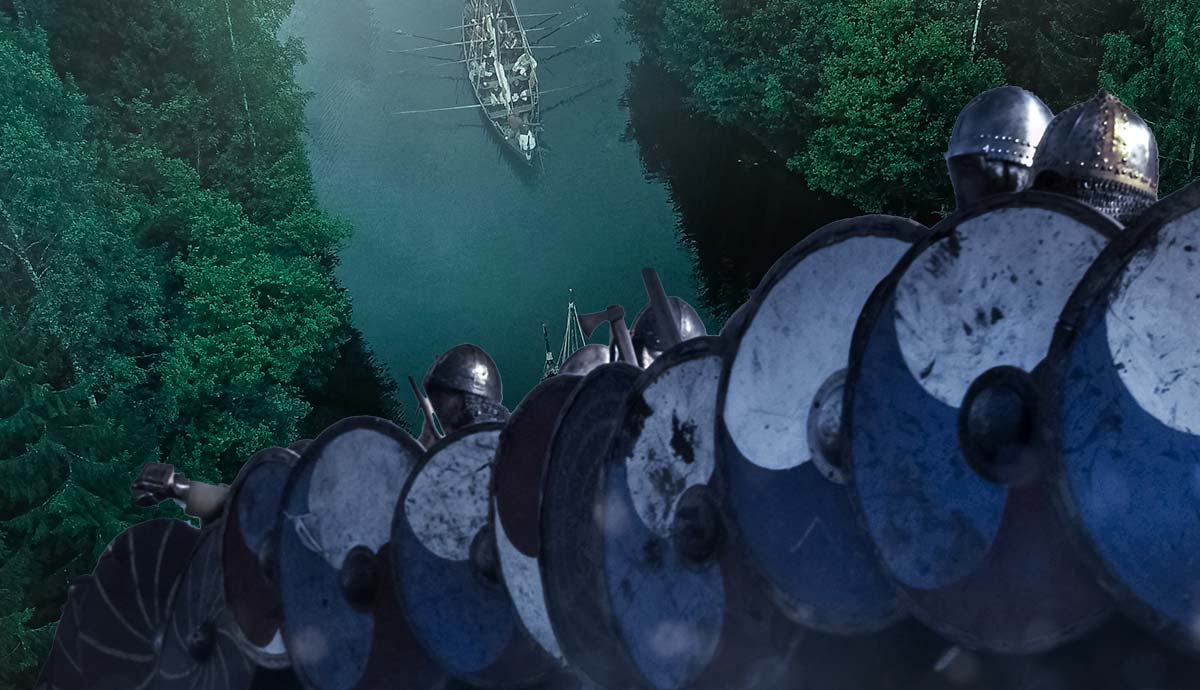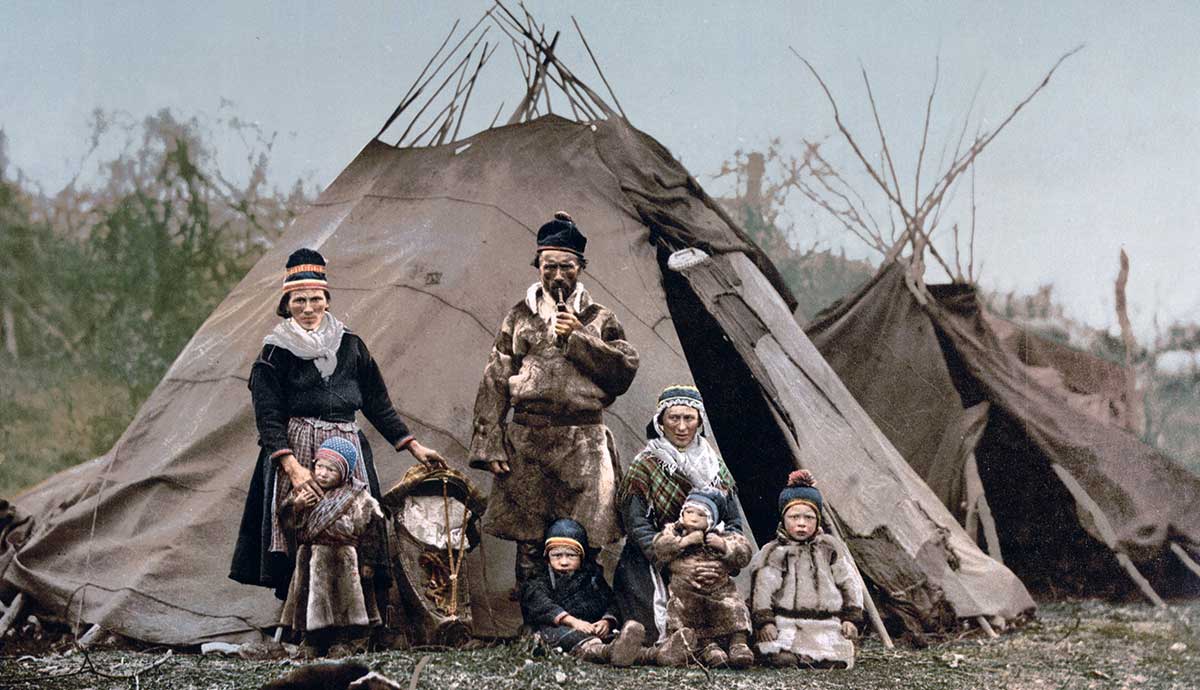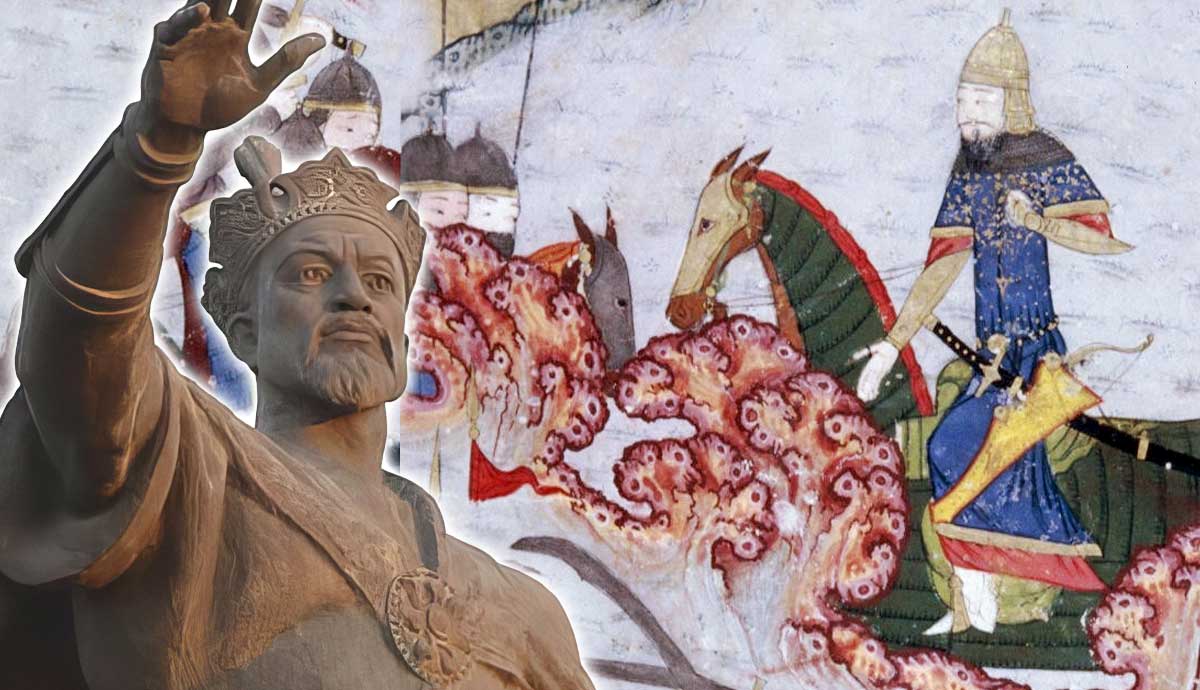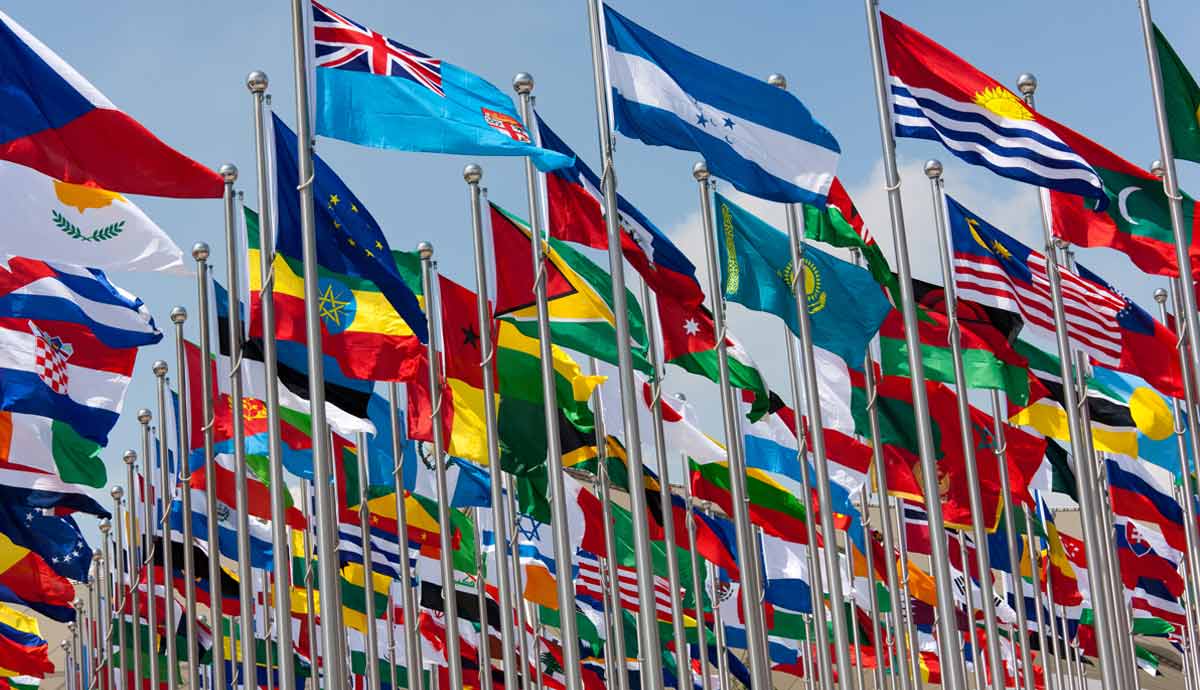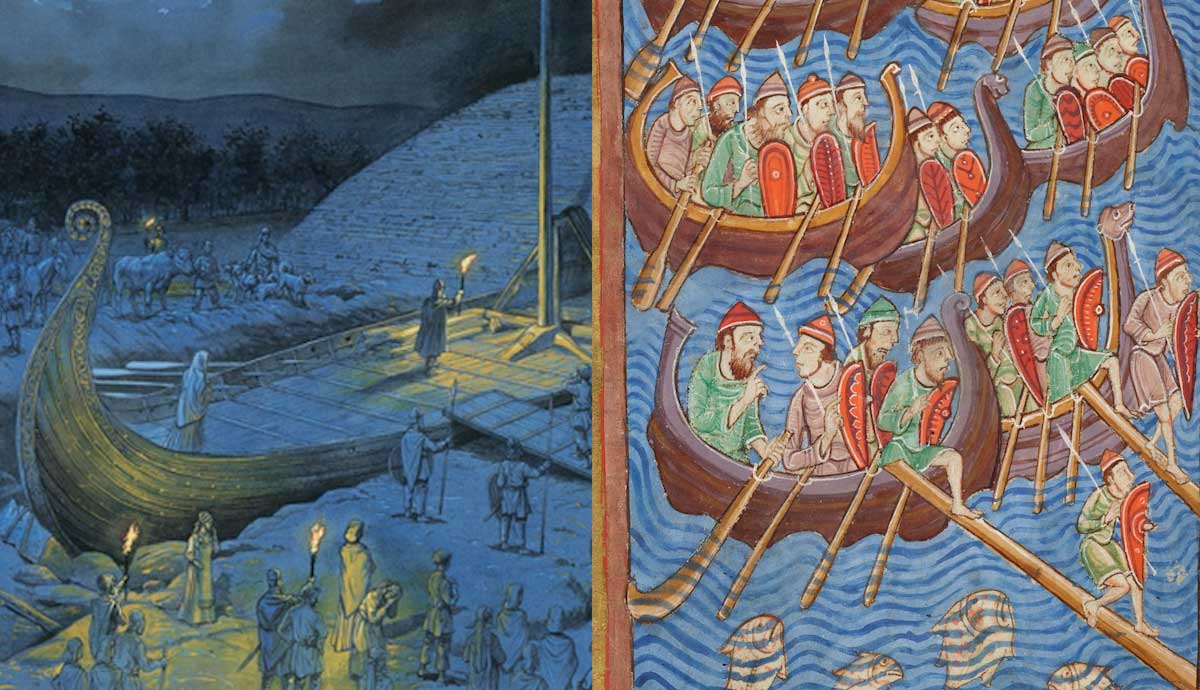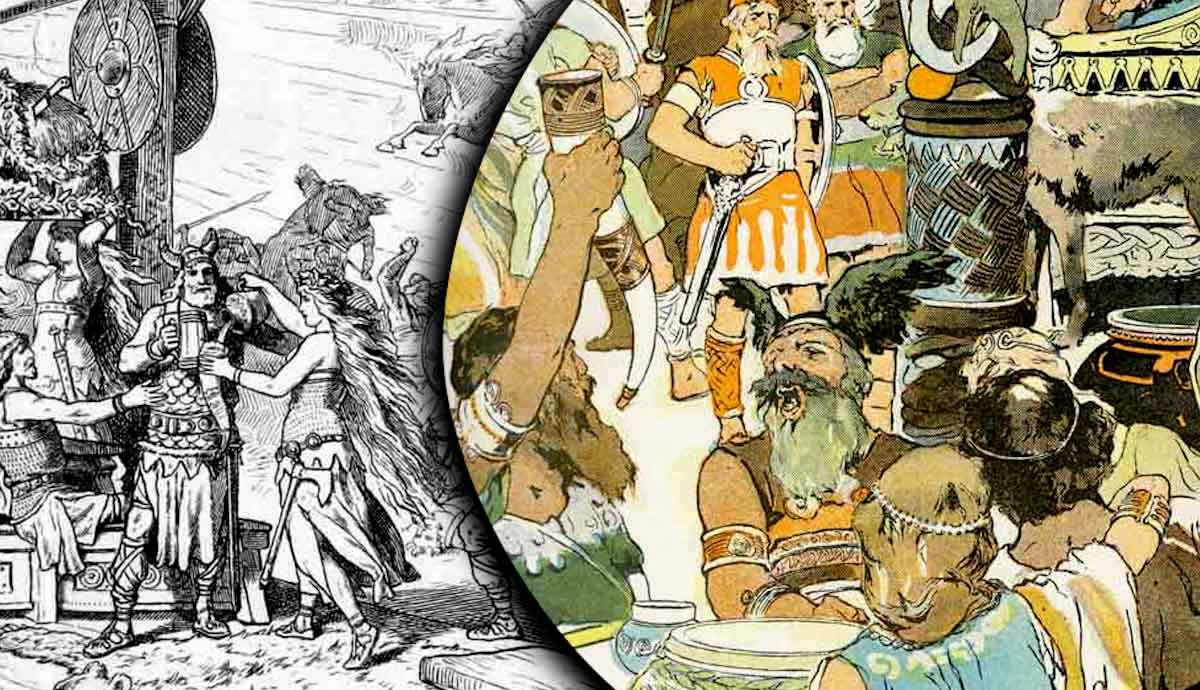
In modern representations of the Vikings, you will often hear them say that when they die, they expect to find themselves in Valhalla, a kind of warrior paradise overseen by the Norse god Odin. But what did it take to earn a place in Valhalla, what was this hall of Odin like, and what did it mean to join the Einherjar? Additionally, what happened to the Vikings who did not earn a spot there? The surviving sources make mention of several different afterlives — although how they relate to one another is often unclear.
Belief in Life After Death

We know less about Norse afterlives than you might imagine. This is principally because all the surviving written sources for the Norse afterlife come from after the widespread conversion of the Vikings to Christianity. As a result, the way the afterlife is described is heavily influenced by Christian ideas.
Nevertheless, we know that the Vikings believed in life after death from their burial practices. Typical Viking burials included items they used in life, suggesting that they believed people would need these objects in the next life.
The burial goods reflected a person’s life. They might be buried with tools of their profession, jewelry that reflected their social status, and weapons. Swords were very valuable in the Viking world because they were complex and expensive to manufacture. Therefore, when a warrior was buried with their sword, it was bent, presumably to discourage grave robbers.
Viking ship burials are a well-known phenomenon, but this was an honor reserved for the wealthiest and most important individuals. Again, this was a tool that served a person in life and could continue to serve them in the next, suggesting a belief that life after death looked a lot like this life.
There is also evidence that the very, very wealthy might have been buried with slaves, who were essentially human sacrifices. A burial at Flakstad in Norway was found to contain multiple bodies in the same grave, but DNA and dietary evidence suggests that they were slaves buried with their master. In addition, the 10th-century traveler Ahmed ibn Fadlan claimed that he saw a woman sacrificed as part of the funeral of a Viking chief. However, the evidence suggests that this was rare.
Transitioning Between Life and Death

The Vikings believed that the soul was comprised of four parts. The Hamr is the physical appearance of a person, which could be changed through shapeshifting rituals. The Hugr is the person’s personality or character. The Flygia is a totem of a familiar spirit, which a Volva (witch) might send out into the world to travel and see on their behalf. The final part is the Hamingja, which is a person’s quality or inherent success in life, and this appears to have been inherited within families.
It was probably the Hugr that moved on to the afterlife, but there were several different afterlives that it could move into. The dead were generally described as passing to Helgafjell, which means “the holy mountain.” This was probably not a specific place but just the general realm of the dead.
The dead are sometimes described as coming back to visit the living. One place where they often made this transition was at their burial mound, where the veil between the world of the living and the dead was believed to have been thinnest.
This could be a disconcerting experience. For example, when the hero Helgi returns from Valhalla to visit his wife Sigrun at his burial mound, he is still covered in his battle wounds, but he spends the night holding his wife. After his first appearance, Sigrun returns every night in search of him, but he never returns. She dies of a broken heart. But despite this harrowing tale, most descriptions of life in Helgafjell are of a happy and pleasant existence that mirrors the world of the living.

A much worse fate was to not to pass over at all, but to remain in limbo in the world of the living as a draugr, a kind of zombie. According to Norse legend, it was normally evil men and ones with unfinished business that remained on the earth of draugr. They possessed otherworldly strength and had grotesque features including horrible blue skin and eyes so terrible that they could freeze a man with fear. They tormented their community by killing livestock, collapsing homes, and killing servants.
The only way to kill a draugr was by decapitation. When it was suspected that a draugr was tormenting the community, people would weigh down the recently dead by placing rocks on their bodies or placing a blade over the dead body’s neck so that it would decapitate itself if it tried to rise.
But turning back to the dead who did pass over, in addition to being in the general veil of Helgafjell, there were several specific afterlife realms where they could find themselves in.
Valhalla: Realm of the Einherjar

According to Norse mythology, the god Odin, with the help of his band of Valkyrie shieldmaidens, chose the bravest fallen warrior from the battlefield to live in Valhalla, a hall of Odin in Asgard, the realm of the Aesir gods. Odin is sometimes called Valfodr, which means father of the slain. In Valhalla, the warriors, who were collectively called the Einherjar (“the lone warriors”), feasted and trained with the express purpose of fighting alongside the gods at Ragnarök, the end of the world.
While our descriptions of Valhalla come from Christian authors, especially the 13th-century Icelandic writer Snorri Sturluson, the idea of Valhalla is certainly much older. For example, it is mentioned in the 10th-century poems Hakonarmal and Eiriksmal.
Snorri Sturluson describes the hall as enormous and majestic, with a thatched roof made from golden shields. It has many doors and enough space for all the warriors, who have been growing in number since the beginning of time.

The warriors are served mead by the Valkyries, which is taken from the udders of the goat Heidrun, which lives on the roof of Valhalla. He eats the leaves from a tree called Laeradr, which may be part of Yggdrasil, the world tree. The warriors also eat meat from a pig or boar called Saehrimnir, prepared by a cook called Andhriminir in a pot called Eldhrimnir. They can eat their fill every night as the boar is magically restored each day, much like Thor’s two goats.
Upon arrival, the warriors are greeted by Bragi, a divine skald (poet) who may have been a real person, the 9th-century skald Bragi Boddason, brought to Valhalla for his skill. He composes poems about their deeds, just as skalds did in the halls of chiefs in the realm of the living.

Valhalla was considered the most desirable afterlife, and only open to warriors who died bravely in battle. There is evidence that when older warriors were on their deathbeds, their loved ones would stab them to trick the Valkyrie into thinking that they belonged in Valhalla. The poem The Hakonarmal suggests that magical words were spoken over the grave of Hakon to ensure that his Hugr made its way to Valhalla.
The Valknut, a symbol of three interlocking triangles, was the symbol of Valhalla. While we do not know what the Vikings called the symbol, it always appears in association with both Odin and the dead, drawing a clear link to Valhalla. When associated with graves, it could have been used to indicate the belief that the fallen person was in Valhalla, or to call on the Valkyries to come and take them there.
Folkvangr: Field of Freyja

But Valhalla was not the only afterlife for fallen warriors. The goddess Freyja also ruled over an afterlife called Folkvangr, which means “field of the people.” She is one of the Vanir goddesses who came to live in Asgard following the Aesir-Vanir War.
According to the sources, Freyja also chose brave fallen warriors from the battlefield to transport to Folkvangr. The sources also suggest that Freyja had the first choice. This has led to confusion around whether Freyja was also a Valkyrie, and if overseeing Folkvangr was somehow an extension of that responsibility.
On the other hand, Folkvangr may not have been exclusively for fallen warriors. In Egils Saga, when the protagonist Egil refuses to eat, his daughter says that she will also go without food until she starves to death and is welcomed to the table of Freyja, presumably in Folkvangr. So, Freyja may have had different criteria for choosing her fallen.
Helheim: Traveling Downward

While Valhalla and Folkvangr were believed to be in the higher realms, in Asgard, Helheim is an afterlife located in the lower realms, in Niflheim, a world of cold and mist among the roots of Yggdrasil. This stronghold of the dead within Niflheim is called Helheim after the jotun (giant) Hel, who rules there.
Hel is the daughter of the trickster jotun Loki with the jotun Angrboda. Hel was born half-black and half-white, which is interpreted as meaning half-living and half-dead. Consequently, she was both feared by the gods and considered horrific to look upon. They sent her away, placing her in command of the Niflheim underworld.
But that does not mean that Helheim was considered a place for the wicked. When Balder, the son of Odin and Frigg, who was considered the most noble of the Aesir gods, died due to the machination of Loki, he found himself in Helheim. But Helheim is a place of no return. Even Odin could not retrieve his son from Helheim. Odin sent Hermod to Helheim to negotiate for the release of Balder, but this was unsuccessful. While Helheim seems to have been a general afterlife, our only descriptions of Helheim come from Christian authors, who clearly describe it with Christian ideas of Hell in mind.

The road to Helheim is called Helvegr and it involves traveling through a dark and misty land and then a sunny and fertile land where herbs grow year-round. You then reach a raging river that is flowing with weapons called Gjoll, which means “loud noise.” You cross over a bridge called Gjallarbru and meet a jotun called Modgudgr, whose name means “furious battle.” She oversees a field of fallen warriors locked in eternal battle. You then arrive at the walls of Helheim where you are confronted by Garm, the guard dog of Helheim.
Sturluson describes Helheim as a dark and dreary hall called Elvidner (misery), where Hel eats from a dish called “hunger,” with a knife called “famine,” suggesting that no amount of eating can fill the empty stomachs of the dead. He also refers to a bed that is called “sick bed,” again suggesting that no amount of sleep can ease the weariness of the dead.
Death Reflects Life

Even these afterlives are not the only places where the Vikings believed a person might find themselves after death. Another source mentions Ran, a realm named for the jotun Ran who lives at the bottom of the ocean in a realm illuminated by the masses of treasure that she accumulates by sinking passing ships. It is said that she catches sailors in her nets, drowning them, and keeping them with her in her watery realm. There were probably other realms like this one that have been lost to time.
What this suggests is that the Norse believed that how you lived your life and how you died influenced where and how you spent your time in the next life. This suggests that life after death is a continuation of life and how you choose to live and die, matters.


